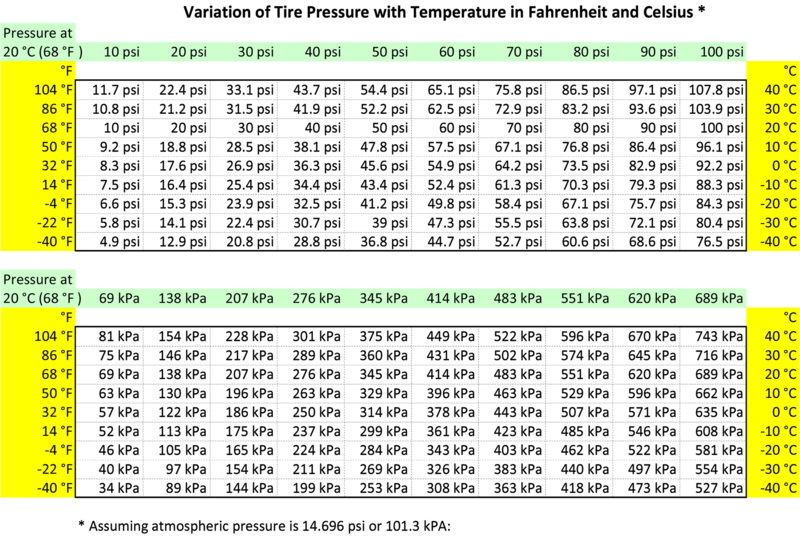
Tires with the recommended amount of air pressure tend to last longer and give you a better driving experience. Knowing more about cold vs warm tire pressure will ensure that you fill your tires correctly. Underinflation (prior to a TPMS warning) is increasingly dangerous at high speeds, heavy vehicle loads, extended distances, and at high ambient temperatures. Recommended tire pressures vary depending on the temperature. May not warn of rapid inflation pressure loss in a single tire.May only detect inflation pressure differences between tires (in other words, if all tires are losing inflation pressure at the same rate, it is possible that the TPMS will not adequately warn of inflation pressure loss).Lack of warning of low inflation pressure until one or more tires is as much as 25% below the vehicle manufacturer’s recommendations.However, a TPMS should not be solely relied on for inflation pressure maintenance because some systems may have limitations, such as: Tire pressure monitoring systems are designed to be beneficial and accurate. Tire Pressure Monitoring Systems (TPMS) – It is still important to check inflation pressure at least once a month, even on vehicles that are equipped with a TPMS. (Evidence of a continuous leak or repeated underinflation requires tire removal and expert inspection.) Tires may also lose a certain amount of pressure due to their permeability (about 2 psi or 14 kPa per month).įailure to maintain correct inflation pressure may result in rapid wear and uneven tread wear, improper vehicle handling, and excessive heat buildup, which may result in tire failure. Remember that tires lose pressure when the air temperature gets colder (about 1 psi or 7 kPa for every 10☏ drop in temperature). Never "bleed" or reduce the inflation pressure in a hot tire. Otherwise, your tires may have heated up, increasing the inflation pressure inside them by several pounds. Tire pressure should be measured when tires are cold – that is, when they have not been driven on. Note that some vehicles may have different cold inflation pressures for tires on the front and rear axles.Ĭheck your tires’ inflation pressures, including the spare, at least once a month and before going on a long trip. In addition to tire safety, this means your tires will wear longer and improve vehicle fuel consumption. With the right amount of inflation pressure, the vehicle and the tires will achieve their optimal performance. Proper Inflation is Critical – Inflation pressure enables a tire to support the load and to control the vehicle therefore, proper inflation is critical. Overinflated tires (over the maximum molded on the tire sidewall) are more likely to be cut, punctured, or damaged by sudden impact from hitting an obstacle, such as a pothole. Do not exceed the maximum inflation pressure shown on the tire sidewall. Underinflation causes excessive heat buildup and internal structural damage that may lead to a tire failure, including tread/belt separation, even at a later date.

Never set tire inflation pressures below the recommended inflation pressure found on the vehicle’s tire placard, certification label, or owner's manual.

The recommended inflation pressures for tires are specified in pounds per square inch (psi) or kilopascals (kPa) as indicated on the vehicle’s tire placard, certification label, or in the owner's manual.


 0 kommentar(er)
0 kommentar(er)
